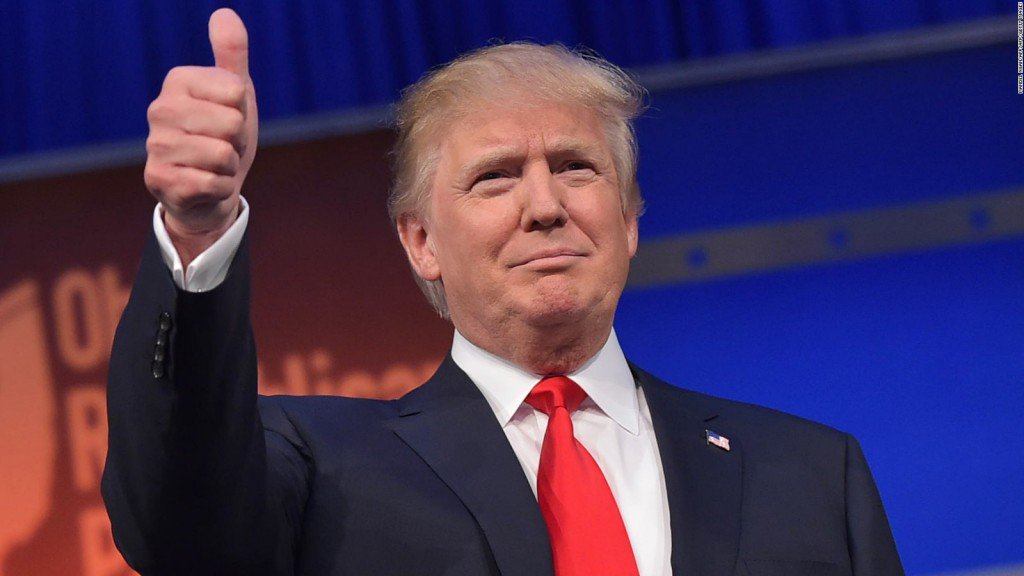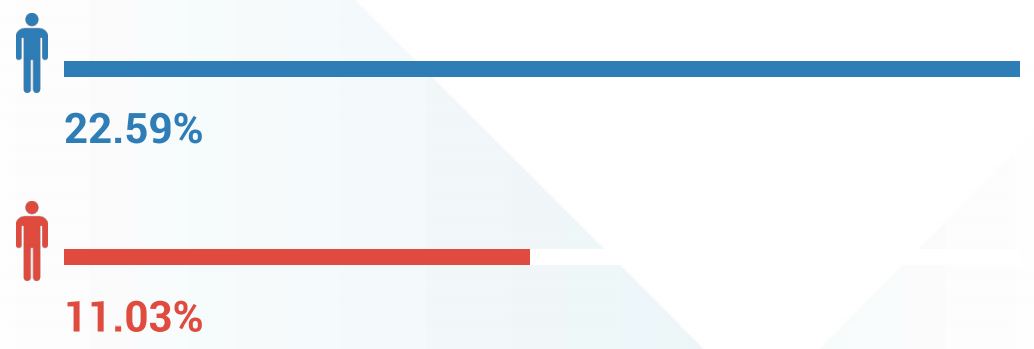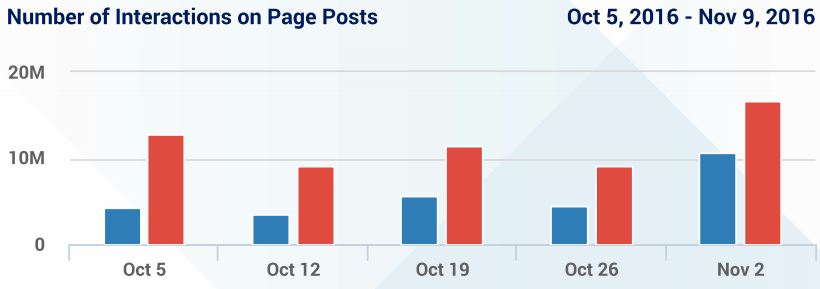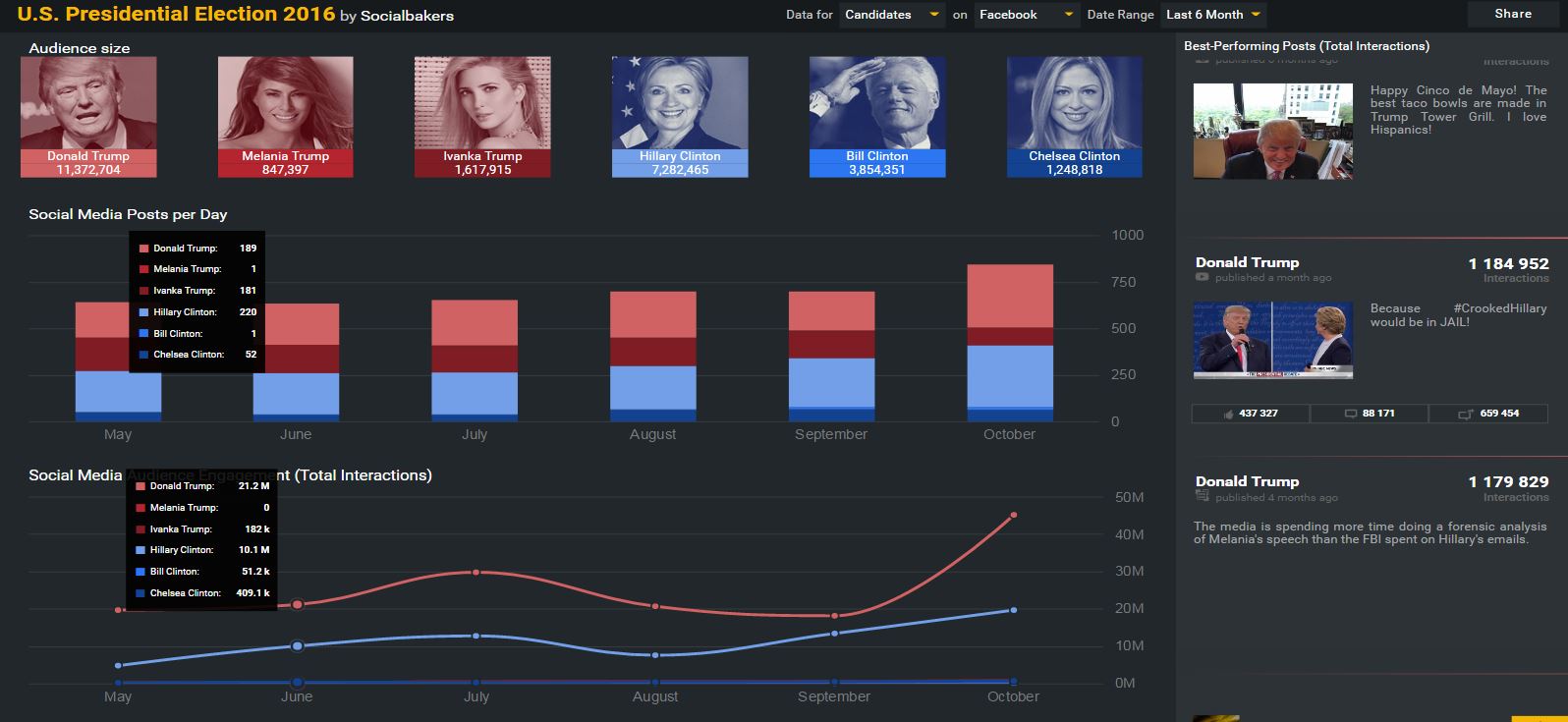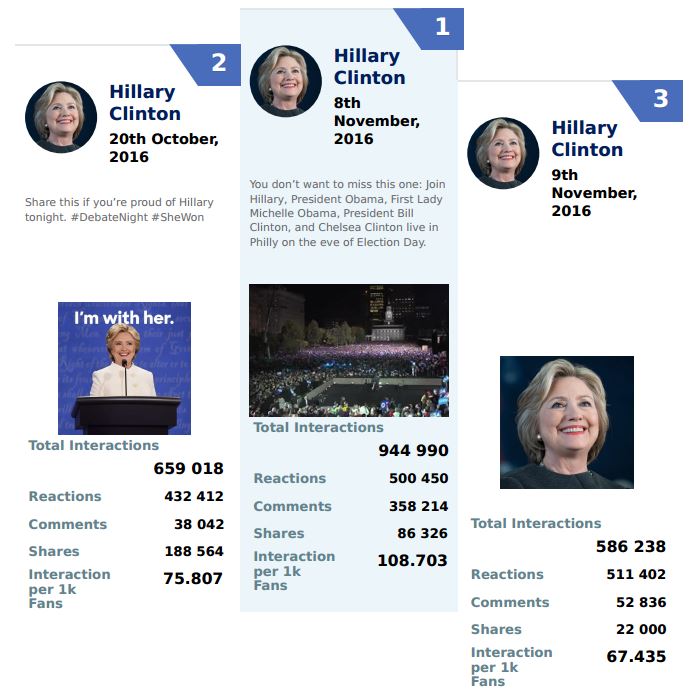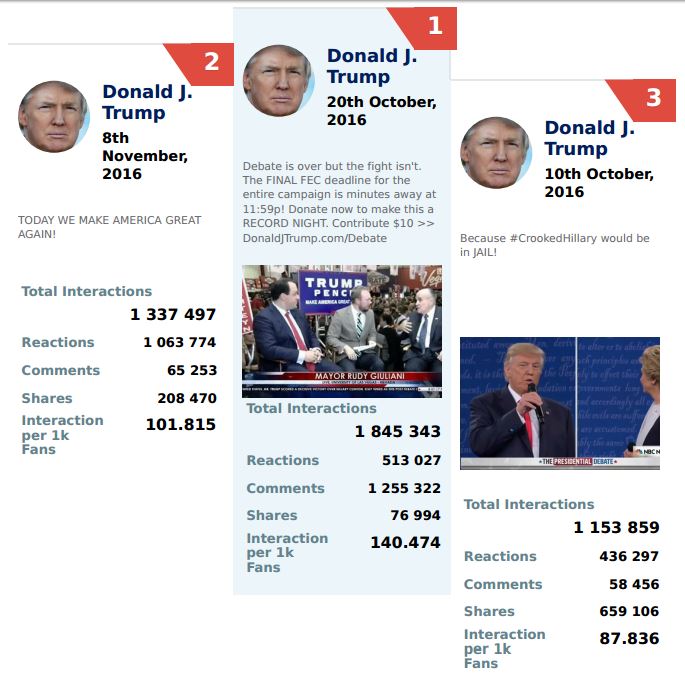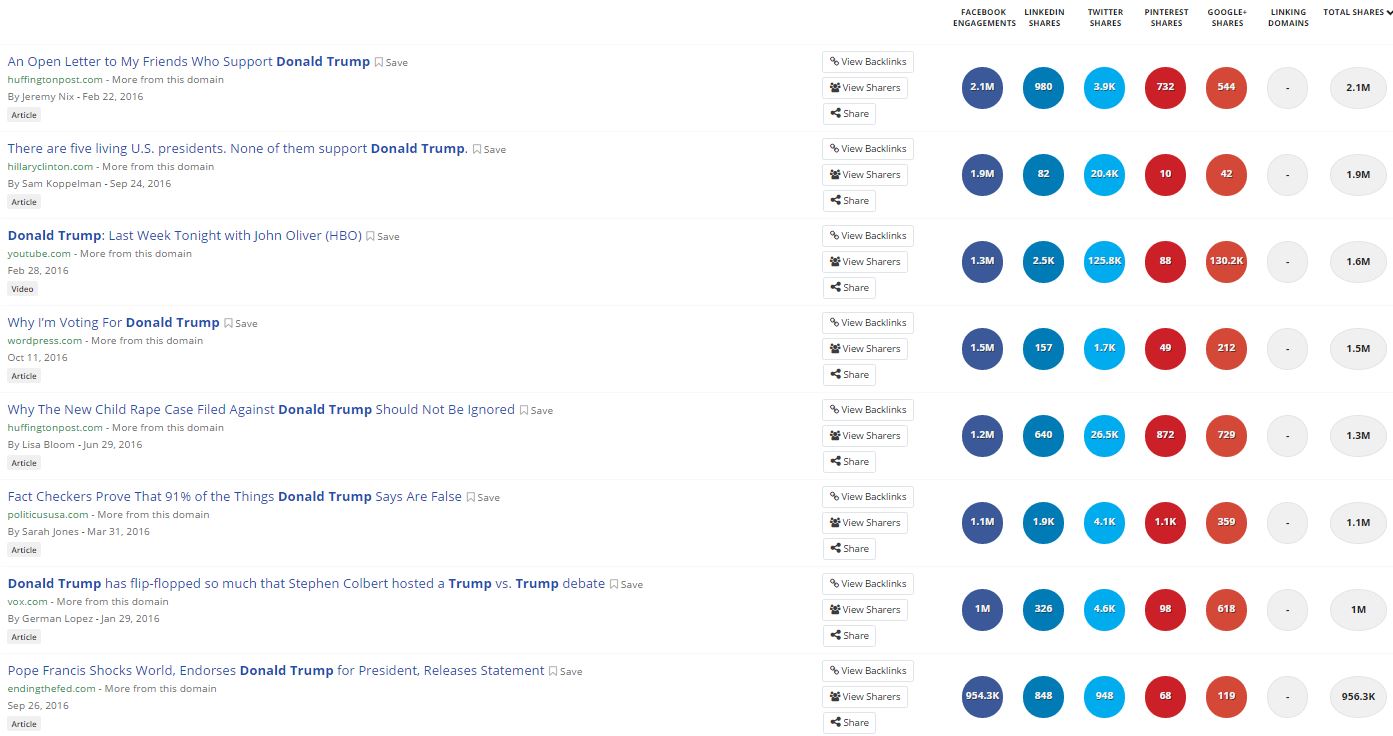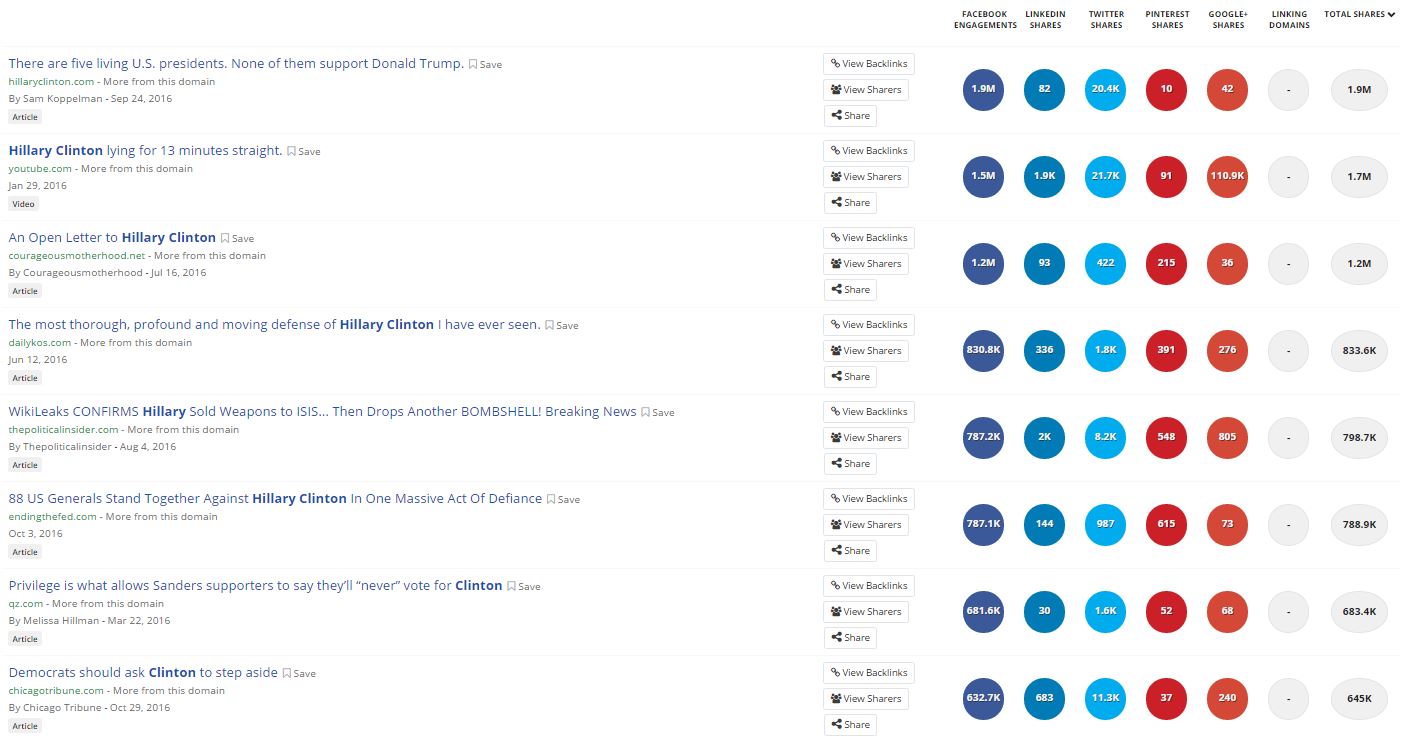Courtesy of The Political Insider
The world is still reeling from the results of the 45th American Presidential Election.
America has elected her 45th president Donald J Trump in a stunning upset over his Democrat opponent Mrs Hillary Rodham Clinton.
Widely unanticipated, Trump’s success at the polls caught the majority of the media and the global public by surprise. Just look at how drastically The New York Times forecast of the chances of a Trump vs Clinton presidential victory has swung barely 12 hours since voting intensified today.
Courtesy of The New York Times
NY Times isn’t alone in getting its predictions wrong. In fact, the majority of media polls before the announcement of Trump’s success predicted a similar outcome – that Clinton would clinch the US presidency to be its first woman president.
What went wrong with the Democrats electoral game? More surprisingly, how could a political newbie who purportedly insulted 282 people, places and things on Twitter shock the world by becoming the most powerful political leader of the free world?
I believe that both social and mainstream media played major roles in this outcome. Here are the reasons why.
#1 Facebook Face Off: Clinton vs Trump
Thanks to Socialbakers free analysis report (you could sign up for a paid account for more detailed analytics), I could compare and contrast between Donald Trump’s and Hillary Clinton’s Facebook page. The results of my analysis were pretty revealing, and demonstrated the stark difference between their Facebook strategies.
With over 13.1 million Facebook fans compared to Clinton’s 8.7 million fans, Trump was in a favourable position relative to his opponent. If you look at breakdown of the top five nationalities of their fans, you’ll also see that Trump had a much higher proportion of American fans relative to other nationalities.
By contrast, Hillary Clinton’s Facebook fans seemed to be more diversified, with a high proportion of fans from Mexico, Bangladesh (didn’t expect that), India and Myanmar (strange too). What this meant was that Trump’s fans were more directly relevant to his mission (to win the US Presidential Election) compared to Clinton.
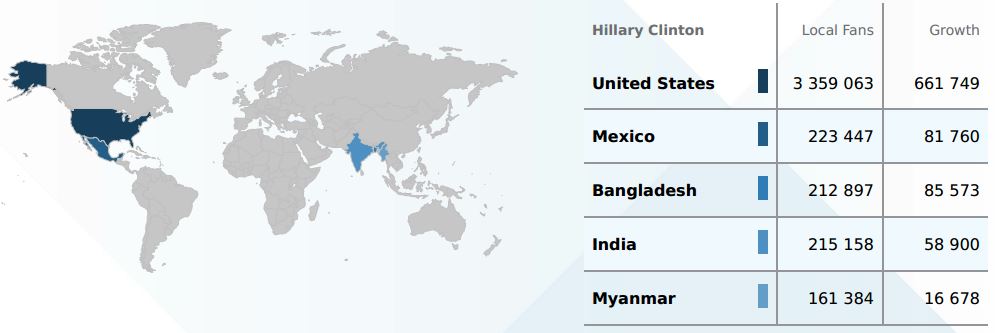
Interestingly, Hillary Clinton (blue) did enjoy a spike in fan-growth over the last month. Her fan growth rate were more than twice than of Trump’s (red).
To me, the ultimate proof of the social media pudding is in the interactions (ie engagement) for each post. Here, we can see that Trump far-exceeded Clinton in generating interactions (ie likes or other reactions, comments, and shares).
From the analysis above, we can tell that Trump has a more relevant social media fanbase that is more engaged relative to Mrs Clinton. Let us take a closer look at the most popular social content for both candidates next.
UPDATE (11 Nov 2016): Check out this scoreboard from Socialbakers tracking the performance of Donald Trump and Hillary Clinton as well as their spouses and children. It looks quite clear that the “red” team were a lot more engaging than the “blue” team. Hat tip to Jeraldine Phneah for this.
#2 Trump’s Incendiary But Engaging Social Content
One of the things which predicts the type of content you’ll see online are the algorithms governing social media. Generally, the more you engage with the social media posts, the higher the likelihood that you will see it in your newsfeeds in future.
Going back once again to the Socialbakers report, you’ll notice that Mrs Clinton performed pretty well in generating reactions, comments and shares for her top three Facebook posts as shown below. Her top three posts garnered 108.7, 75.8 and 67.4 interactions respectively per 1,000 fans.
What about the incoming President Of The United States (POTUS)? Well, his top three Facebook posts were easily double that of Hillary Clinton’s in terms of engagement. Each recorded a significantly higher number of interactions per 1,000 fans.
If you look at Trump’s third most popular post – a short and rather inflammatory post titled “Because #CrookedHillary would be in JAIL!” – you’d noticed that it has a staggering 659,106 shares! This showed that it obviously resonated a lot with his fans and their friends.
Which brings us to the next point.
#3 Anger and Anxiety Triggers Virality
According to Professor Jonah Berger, author of the book Contagious, negative emotions like anger and anxiety trigger a lot more sharing than emotions like contentment or sadness. We feel a lot more compelled to tell others about incidents that trigger our acute “fight” or “flight” stress responses – times when our adrenaline levels are most likely to be pumped up.
With his emotionally riling speeches and social media posts, Trump obviously triggered both emotions by the spadeful. Plus this other thing which Trump seemed to be extremely good at…
#4 The Art of the Sound Bites
Donald Trump is a master of the sound bite. His quotes may be irreverent, off-colour and painfully direct at times. But one thing is for certain – you do remember them!
Just look at this collection of 30 of Trump’s most outrageous quotes. By contrast, how many of Hillary Clinton’s sound bites and quotes do you recall?
#5 Movement Marketing Maestro
Trump’s campaign slogan “Make America Great Again” has been widely ridiculed and parodied. However, you can’t argue that it is effective in getting you to remember it. In fact, it has become a highly popular meme during the election campaign period.
Alignment to a powerful idea is an example of movement marketing in action. Using his slogan as a rallying call, Trump could reach out to his large target audiences of disenfranchised Americans who were left out by the strong push for globalisation. You could even say that it has a strong element of storytelling in it, with a David versus Goliath appeal to it.
Contrast this with Hillary Clinton’s campaign slogan of “Stronger Together” which somehow doesn’t quite have the same “oomph”.
#6 Donald Trump the Social Object
Renowned cartoonist Hugh MacLeod coined the term social object in his book Evil Plans. It is defined as “an item, person, event which people have conversations about.”
With his spontaneous remarks, stage bravado, and trademark “orange” tan, Donald Trump has become an object of social buzz himself. In fact, if you look at the number of social shares (using Buzzsumo) on the top 8 articles with the word “Donald Trump” in them, you could see that they each had a million or more shares (click for larger image).
Contrast this with Hillary Clinton, which had a significantly lower number of shares for the top 8 “viral” articles with her name on it.
#7 Extreme Behaviours Generate Big News
Because of its propensity to magnify the obscure and amplify the extreme, the media does skip humdrum everyday occurrences. Thus, the view of the world presented by the news tend to be one that is flavoured by superlatives.
In such an environment, Trump would score brilliantly relative to Clinton. While her behaviours were polished and “safe”, they were not as newsworthy as Trump’s actions. This could have led to a much lower share-of-media-coverage for Clinton relative to Trump in the last few months leading to the election.
(I don’t have the exact numbers to back me up here, so any inputs here would be welcome.)
#8 Bad News Trumps Good News
Oh and one more thing about the media and its consumers (ie us). We are much more likely to be attracted to bad news than to good news.
In fact, psychology trained marketer Sally Hogshead has reported that we are fascinated by triggers like lust, alarm and vice! I guess Trump has somehow managed to use this to his advantage – whether intentional or unintentional.
#9 Filter Bubble and Social Media Algorithms
As I’ve previously blogged about here, our actions on social media influences what we will receive. The more we engage with a piece of content – whether we like it or not – the more we will receive content of that nature in our news feeds.
Now if you think back on the last few months, whose content did you share more – Trump’s or Clinton’s? My guess is that you probably commented and engaged more with the former than the latter.
Remember Singapore’s General Election in 2015?
If Trump’s triumphs looked surprising, it should ring a bell to our own General Election slightly over a year ago.
Singapore’s last General Election in 2015 also yielded a result which many did not anticipate. While it was expected that our ruling political party, the People’s Action Party (PAP) would win, few have expected that their margin of victory would be that significant.
While Singapore’s political situation is certainly different from that in the United States, the experience from both these elections reveal that what we perceive on social media needn’t necessary reflect on the eventual electoral outcome. Like Singapore, the US probably has a silent majority whose voting choices may not be apparent to those of us who are active on social media.
Do you have other insights on the American Presidential Elections? I’d love to hear them.

